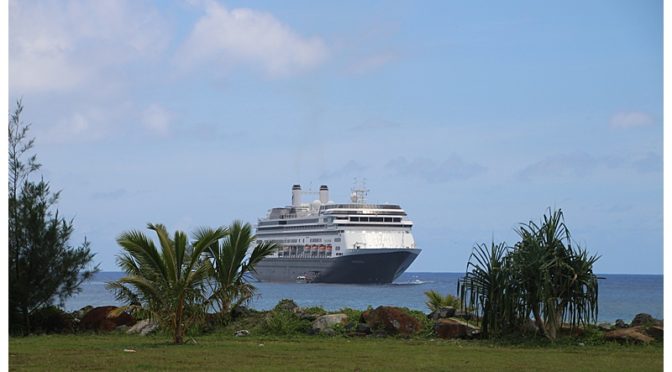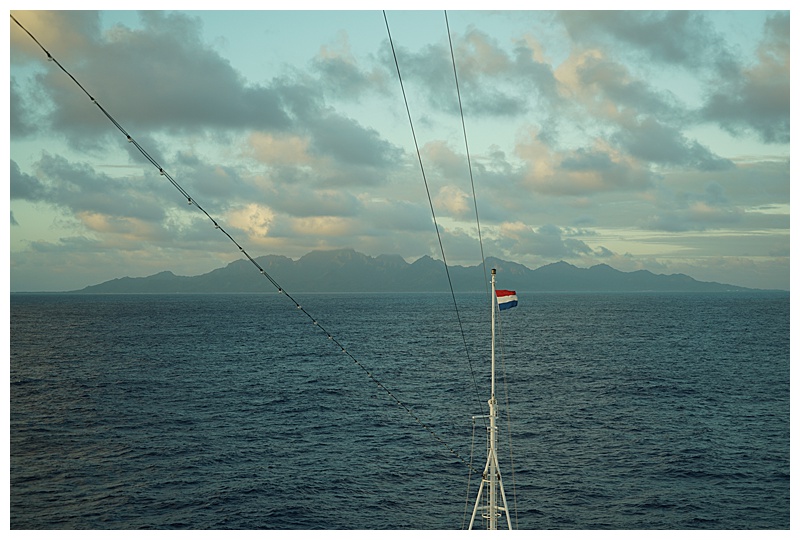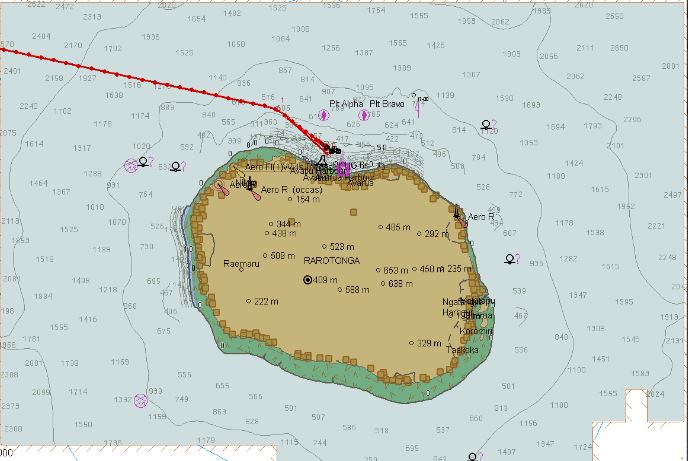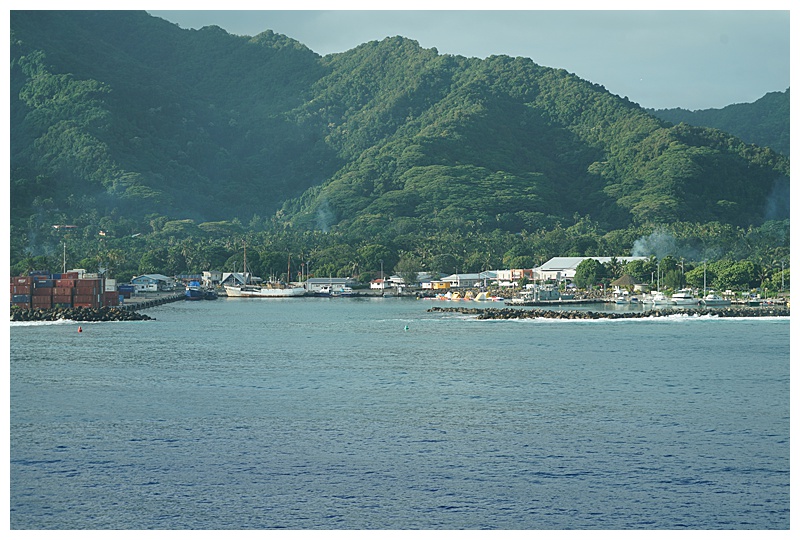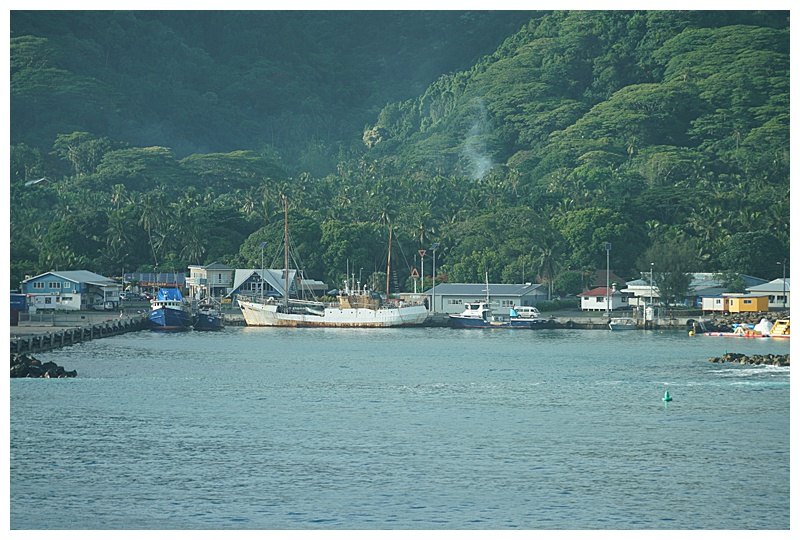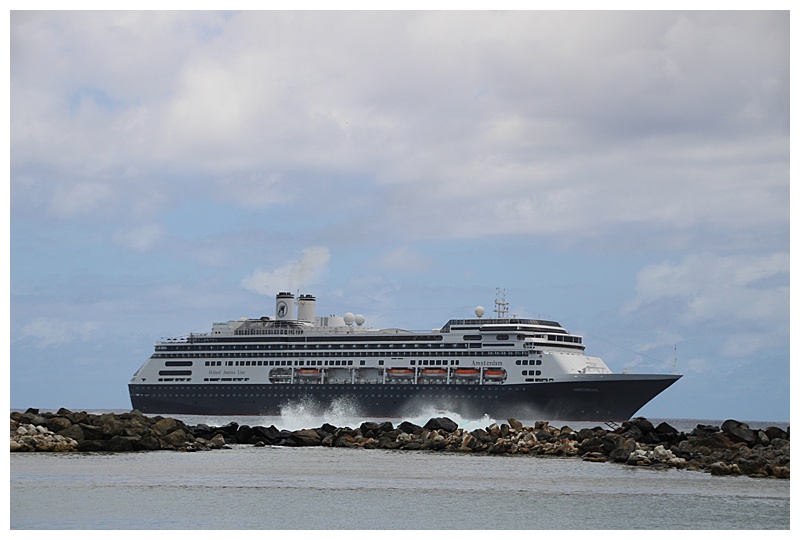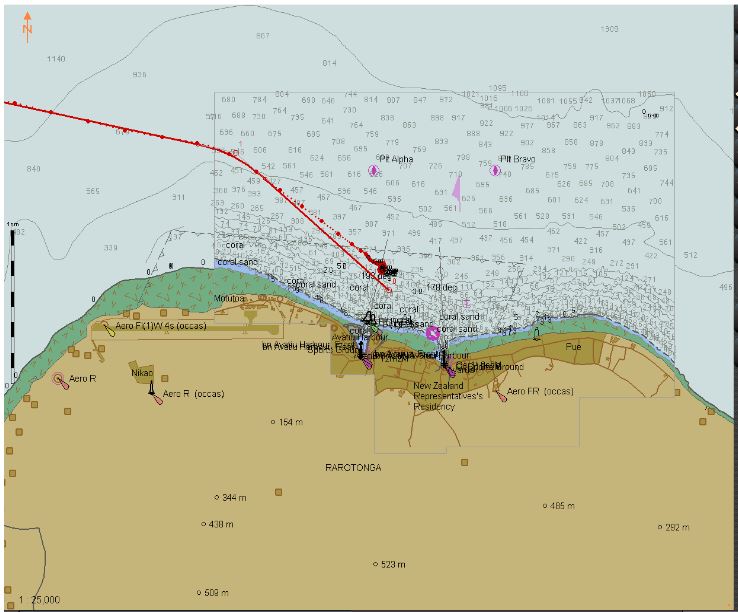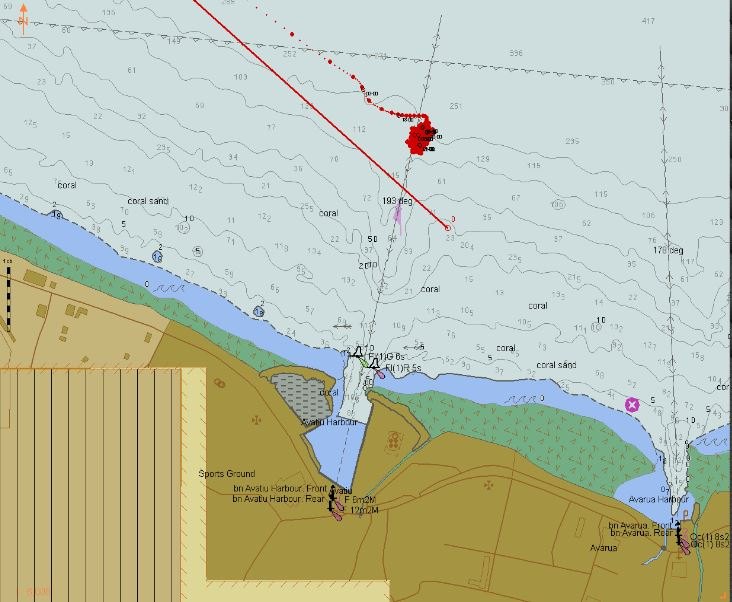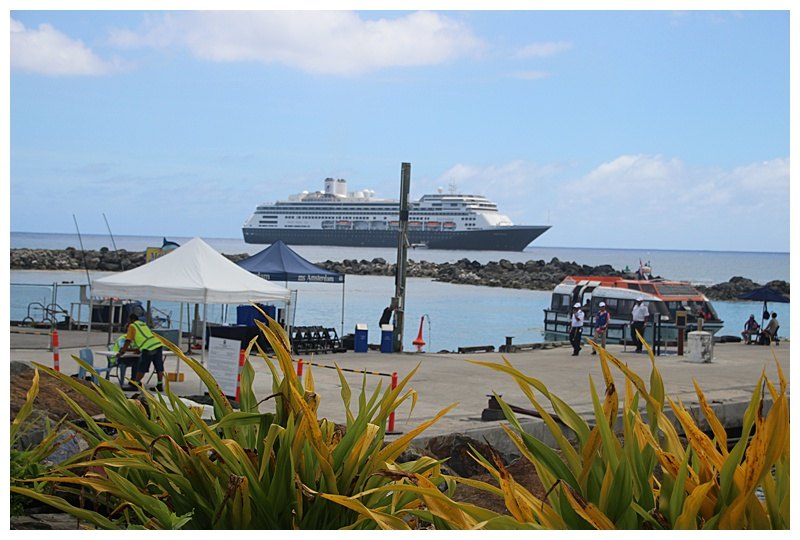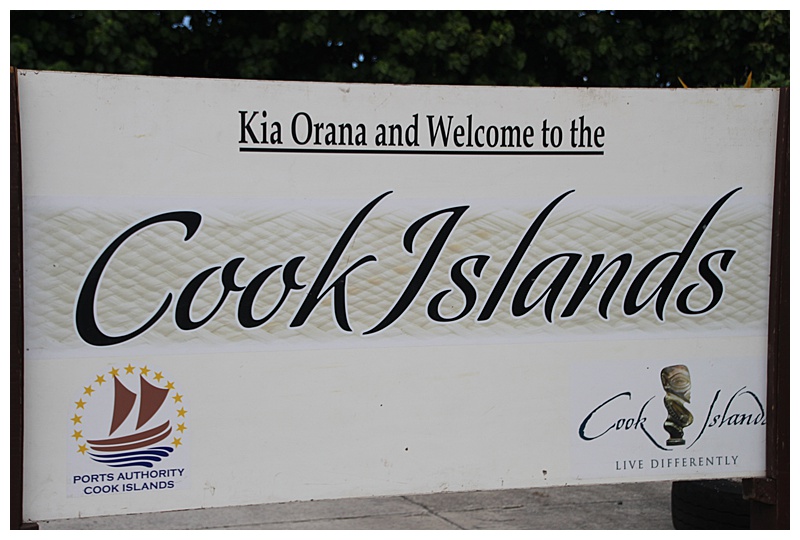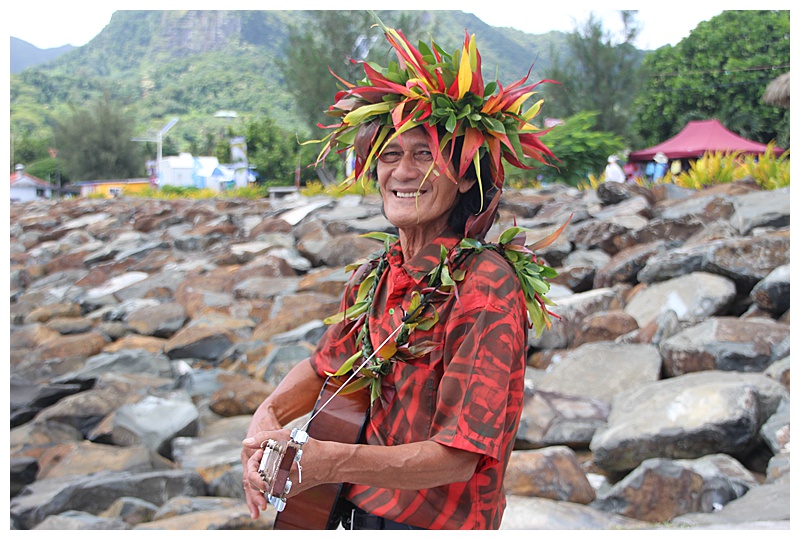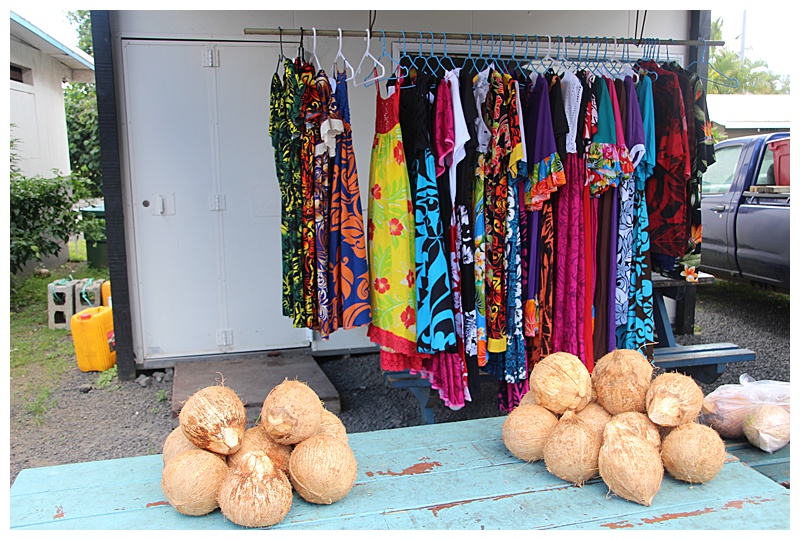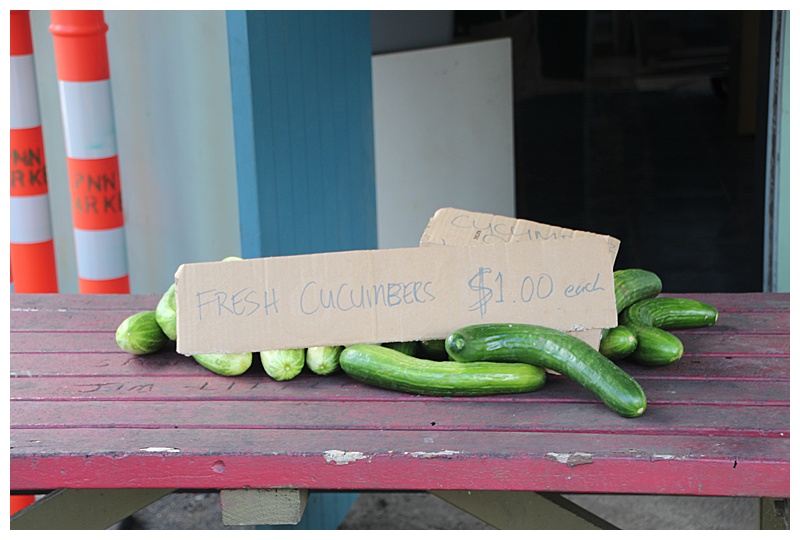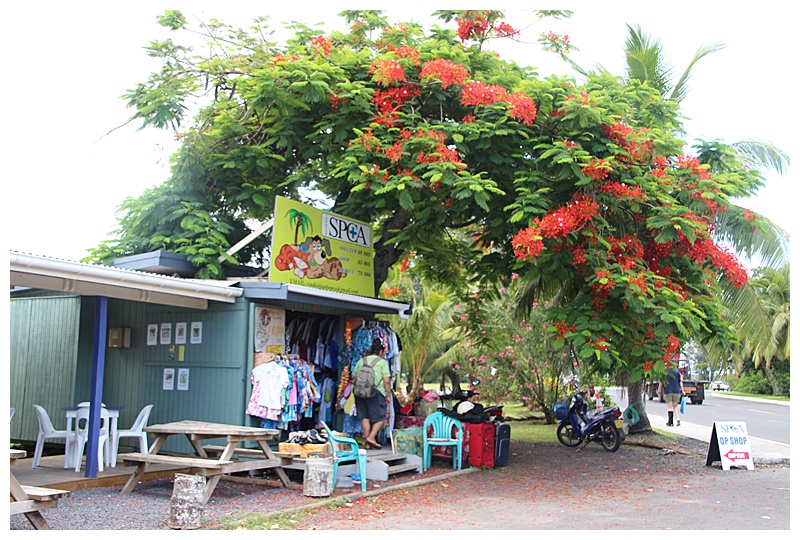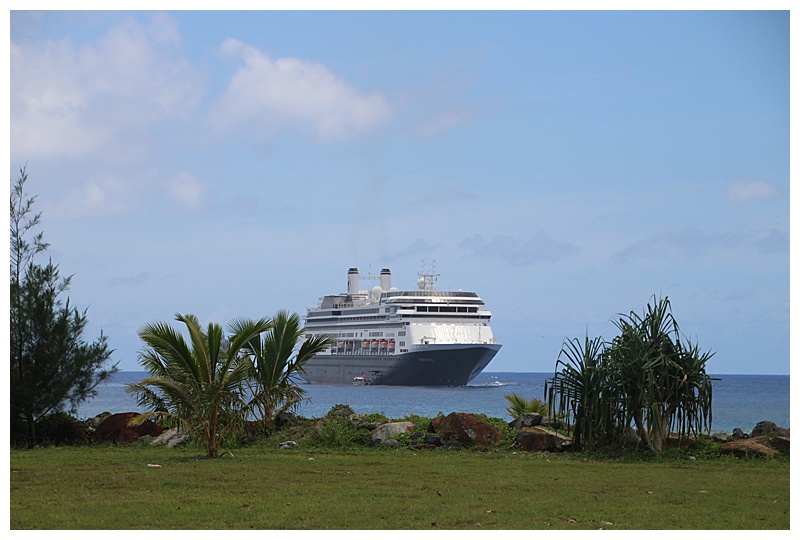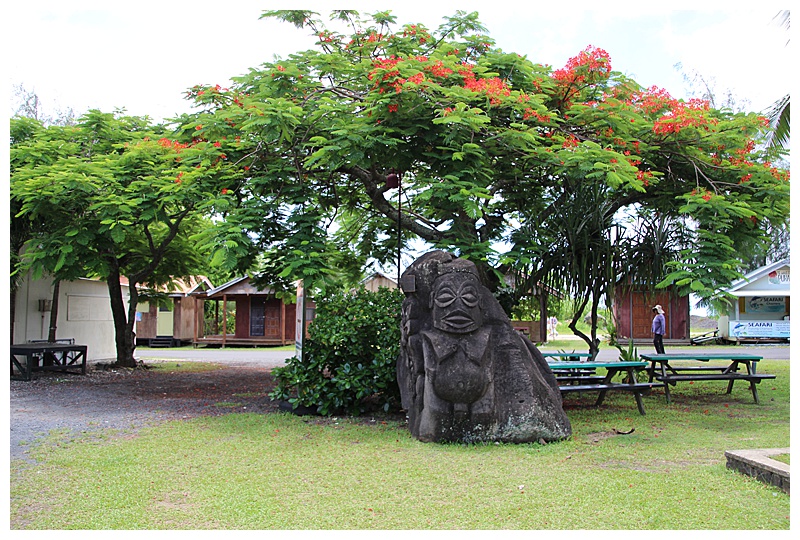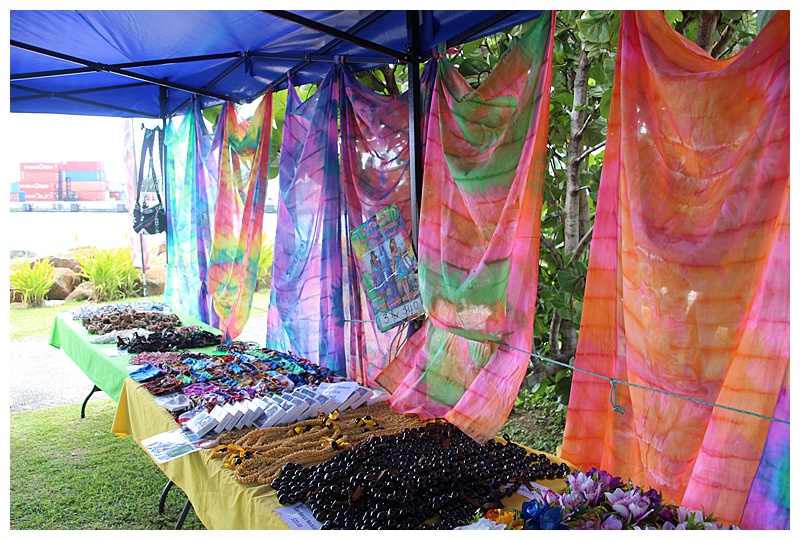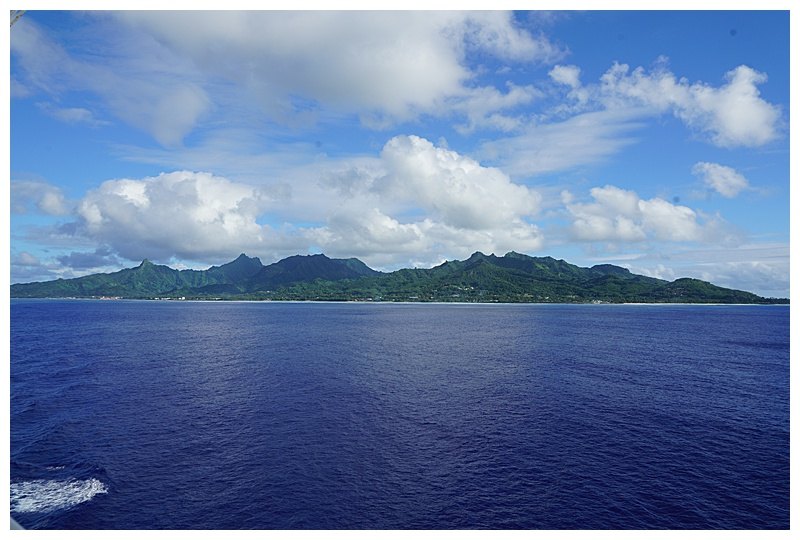In the early morning light of the 26th, the outline of Rarotonga loomed in the distance, the humidity making the details of the island difficult to see.
All I knew was that 12 miles off, (7½ kms), the Pacific swells, (yes, more than 1), were long. As many of you know, I have yet to manage the call at the main town, (Avatui), the conditions off the small harbour have always been such that tender operations were impossible. The alternative, on the west side of the island, was not an option for me after 2016’s tender grounding.
So, it was with some trepidation that I approached the island. Cruise ships call here on occasion, however usually cancel because of the sea conditions. The challenge for me being that many of our guests, who cruise with us frequently, have never had their feet on dry land here; so it’s a ‘bucket list’ call for them. Slowing down as we neared the island, our intention was to get close to the harbour entrance and find a heading that would negate some of the swell, (using the hull as a breakwater and endeavouring to make ‘calmer’ water near the tender platform). 3 cables off, (a cable is 1/10 of a mile), still in very deep water, I adjusted the heading of the ship, while on ‘joystick’, trying to find that ‘sweet spot’, where the swell was sufficiently reduced on the starboard side, from which we would send our tenders.
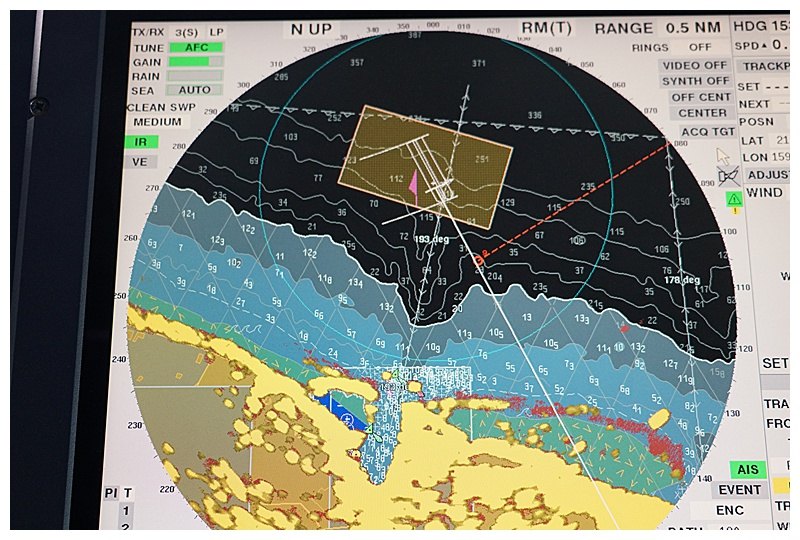
A radar picture; us ‘in the box’, the harbour down at the 6 o’clock position.
We had 3 swells, the largest coming in from the north, another parallel to the coast and the 3rd? That pesky one was bouncing off the coast and coming back at us; it wasn’t going to make it easy for us. Discussions with the Bridge team followed and the decision made to lower one of our tenders to the water and bring it alongside our (now open) tender platform. Having achieved this, it was apparent that, with care and sufficient crew to assist, we could run tenders ashore. The boats were moving substantially at times and embarking guests would stop until the movement eased.
Crew assisting on the platform and in the boats, each guest individually being told when to board and several pairs of hands holding them while they did so. A slow process, however a safe one; it took 25 minutes or so just to fill a tender. The guests were marvellously patient under these circumstances and, 4 hours after we started, we had over 800 guests ashore enjoying the island. I, understandably, did not go and instead relied on K1 taking her camera and becoming my ‘roving reporter’ once again; these below are hers.
As I write at my desk, we are heading west-north-west for the island of Niue and the town of Alofi, on the west side of the island. We arrive tomorrow (28th) morning. I will be our last of a series of calls where we have had to use our tenders, the next being in Tasmania. It will be a ‘hover’ day, once again, the water is too deep to anchor, however hopefully this time, I will manage a quick jaunt ashore.
